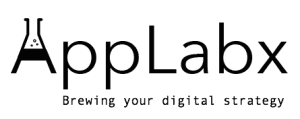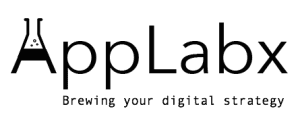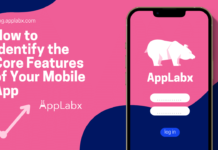Key Takeaways
- AI agents surpass traditional chatbots by offering personalized, context-aware, and real-time customer support.
- Seamless integration with CRM, ERP, and helpdesk systems enables AI agents to streamline operations and enhance efficiency.
- The future of customer service combines human empathy with AI intelligence for a balanced, scalable, and superior customer experience.
Customer service is undergoing a profound transformation in 2025, and the catalyst behind this revolution is artificial intelligence. For years, businesses have relied on traditional customer service models—call centers, help desks, and more recently, chatbots—to manage customer interactions and provide support. While chatbots brought a wave of automation and efficiency, they often fell short when it came to delivering personalized, human-like experiences. Now, a new generation of intelligent systems is stepping in to redefine customer engagement: AI agents.

Unlike basic chatbots, AI agents are autonomous, adaptive, and context-aware systems powered by advancements in machine learning, natural language processing (NLP), and real-time data integration. These agents don’t just respond to queries; they understand intent, remember past interactions, and make decisions based on complex data inputs. They can operate across multiple platforms, communicate in several languages, and even predict customer needs before they arise. In essence, AI agents go far beyond the reactive, script-based nature of chatbots and instead provide proactive, intelligent, and human-like support experiences.
The shift from chatbots to AI agents is not merely an upgrade in software—it represents a fundamental change in how businesses view customer service as a strategic function. In 2025, customer expectations are at an all-time high. People want fast, accurate, and personalized interactions at any time of day. Companies that fail to meet these expectations risk losing customer loyalty and market relevance. AI agents offer a powerful solution by delivering real-time assistance, reducing response times, and scaling support operations without compromising quality.
Major industries—from e-commerce and healthcare to finance and telecommunications—are already deploying AI agents to enhance customer journeys. Whether it’s automating complex refund processes, assisting with medical inquiries, or offering multilingual financial advice, AI agents are driving efficiency, consistency, and satisfaction at scale. These intelligent systems are not just transforming support desks; they are enabling businesses to build deeper relationships with customers, anticipate issues before they escalate, and deliver value-driven experiences.
Moreover, AI agents are seamlessly integrating with customer relationship management (CRM) platforms, knowledge bases, and enterprise resource planning (ERP) systems. This integration allows them to pull in rich context from various sources, making their responses more relevant and useful. Unlike early-generation chatbots that often required human intervention for anything beyond basic questions, modern AI agents can independently resolve complex queries, escalate when necessary, and continuously improve their performance through self-learning algorithms.
As we move deeper into the digital-first era, the rise of AI agents marks a pivotal moment in the evolution of customer service. It’s no longer just about answering questions—it’s about creating intelligent, fluid, and intuitive interactions that feel genuinely helpful. Businesses that adopt AI agents today are not just keeping up with trends; they are future-proofing their operations, enhancing brand trust, and setting new standards for customer experience.
In this blog, we will explore how AI agents differ from traditional chatbots, examine the core technologies behind them, and delve into real-world use cases across industries. We’ll also address the challenges of AI implementation, ethical considerations, and what the future holds for the synergy between human agents and AI. Welcome to the next chapter in customer service—where AI goes far beyond chatbots.
But, before we venture further, we like to share who we are and what we do.
About AppLabx
From developing a solid marketing plan to creating compelling content, optimizing for search engines, leveraging social media, and utilizing paid advertising, AppLabx offers a comprehensive suite of digital marketing services designed to drive growth and profitability for your business.
AppLabx is well known for helping companies and startups create world-class AI agents.
At AppLabx, we understand that no two businesses are alike. That’s why we take a personalized approach to every project, working closely with our clients to understand their unique needs and goals, and developing customized strategies to help them achieve success.
If you need a digital consultation, then send in an inquiry here.
Beyond Chatbots: How AI Agents Are Revolutionizing Customer Service in 2025
- Chatbots vs. AI Agents: What’s the Difference?
- Key Ways AI Agents Are Revolutionizing Customer Service in 2025
- Industry-Specific Use Cases
- AI Agent Integration with Existing Systems
- Challenges and Ethical Considerations
- Metrics to Measure AI Agent Success in 2025
- The Future of Customer Service: Humans + AI Agents
1. Chatbots vs. AI Agents: What’s the Difference?
In the evolving world of customer service, distinguishing between traditional chatbots and advanced AI agents is critical. While both are tools designed to automate conversations, their capabilities, intelligence levels, and impact on customer experience differ vastly. Understanding these differences allows businesses to make informed decisions when investing in digital customer service solutions in 2025.
Overview: Core Differences at a Glance
The following comparison matrix highlights the fundamental differences between traditional chatbots and modern AI agents:
| Feature | Traditional Chatbots | AI Agents |
|---|---|---|
| Response Type | Rule-based, scripted | Contextual, dynamic |
| Learning Ability | No learning capability | Continuously learns and improves |
| Memory | No memory of past interactions | Retains and uses past interactions |
| Task Handling | Single-turn tasks only | Handles complex, multi-turn dialogues |
| Integration | Limited to basic platforms | Integrates deeply with CRMs, ERPs, APIs |
| Personalization | Generic responses | Personalized based on customer data |
| Proactivity | Reactive only | Can initiate and anticipate interactions |
| Language Support | Limited language capabilities | Multilingual and localized NLP |
| Channels | Often web-only | Omnichannel (chat, voice, email, apps) |
| Escalation | Rigid hand-off protocols | Smart human-agent collaboration |
Limitations of Traditional Chatbots
Despite being widespread in customer support, traditional chatbots suffer from several constraints:
- Rule-Based Logic
- Operate on pre-defined scripts and decision trees.
- Inflexible when users deviate from expected queries.
- Lack of Context Awareness
- Cannot retain memory of previous sessions.
- Treats every interaction as standalone.
- Limited Personalization
- Provides generic answers without user history or preferences.
- Poor Handling of Complex Queries
- Struggles with multi-intent or follow-up questions.
- Often requires human intervention.
- Example:
- A user asks a banking chatbot, “Can you help me with my savings account?” followed by “What about transferring funds to another bank?”
- The chatbot treats both as isolated queries, resulting in repetitive and fragmented conversations.
- A user asks a banking chatbot, “Can you help me with my savings account?” followed by “What about transferring funds to another bank?”
Advanced Capabilities of AI Agents
AI agents are designed to understand, adapt, and learn—offering a more natural and seamless user experience:
- Contextual Understanding
- Understands intent behind user queries using Natural Language Processing (NLP).
- Maintains conversational context across multiple interactions and platforms.
- Dynamic Decision-Making
- Makes autonomous decisions using customer data, business rules, and real-time analytics.
- Can route complex issues intelligently or resolve them without escalation.
- Personalization at Scale
- Leverages CRM data to tailor responses.
- Adapts tone, suggestions, and workflows based on user history.
- Multi-Turn Conversations
- Handles complex workflows, such as booking appointments, troubleshooting tech issues, or financial advising.
- Example:
- An AI agent in an airline app can:
- Recognize a returning customer by login.
- Offer real-time support on booking status.
- Proactively suggest upgrades based on previous flights.
- Adjust travel plans autonomously if disruptions occur.
- An AI agent in an airline app can:
Use Case Comparison Table
| Industry | Traditional Chatbot Use Case | AI Agent Use Case |
|---|---|---|
| Retail | Tracks basic orders and delivery status | Manages returns, suggests products based on purchase history |
| Healthcare | Shares FAQs and clinic hours | Schedules appointments, sends follow-ups, provides symptom triage |
| Banking | Answers balance inquiries | Detects fraud, offers tailored loan recommendations |
| Telecom | Provides plan information | Diagnoses connectivity issues, automates technician dispatch |
Why AI Agents Outperform Chatbots in 2025
- Autonomy and Proactivity
- AI agents don’t wait to be asked—they can alert customers to issues, upsell relevant products, or complete transactions autonomously.
- Omnichannel Continuity
- Maintains conversation state across mobile apps, web, email, and even voice assistants.
- Smarter Escalation
- Seamlessly hands off to human agents when needed, passing full context and conversation history for continuity.
- Example:
- In telecom, an AI agent can proactively detect service disruptions based on network logs and reach out to users with estimated resolution times, alternative solutions, or refunds—something traditional bots cannot do.
Evolution Chart: From Chatbots to AI Agents
Functionality & Intelligence
|
| AI Agents
| /
| /
| /
| /
|/__________________________ Time & Technological Maturity
Chatbots
This visual concept illustrates how AI agents represent a technological leap forward rather than a linear upgrade from chatbots.
Summary
While chatbots laid the foundation for digital customer service, their limitations are increasingly evident in a world demanding instant, personalized, and intelligent engagement. AI agents are not just the next step—they are a paradigm shift. They combine the scalability of automation with the intelligence of human understanding, setting a new standard for what exceptional customer service looks like in 2025.
Next, we’ll explore how these intelligent agents are being deployed across industries to revolutionize customer experience, drive operational efficiency, and unlock new growth opportunities.
2. Key Ways AI Agents Are Revolutionizing Customer Service in 2025
AI agents are transforming customer service in 2025 by delivering highly intelligent, responsive, and personalized experiences at scale. With rapid advances in natural language processing (NLP), machine learning, and real-time analytics, these autonomous systems are redefining what it means to support customers across industries. Unlike traditional systems or chatbots, AI agents operate with contextual awareness, autonomy, and the ability to learn continuously. The result is a more proactive, seamless, and human-like customer service ecosystem that drives satisfaction, loyalty, and operational efficiency.
1. Intelligent 24/7 Customer Support
AI agents offer around-the-clock availability while delivering intelligent, human-like support.
- Always On
- Provides consistent customer service without downtime.
- Eliminates dependency on human working hours or call center limitations.
- Real-Time Query Resolution
- Answers product questions, resolves technical issues, or processes transactions in seconds.
- Reduces wait times and increases customer satisfaction.
- Cost-Effective Scaling
- Handles thousands of queries simultaneously with no degradation in quality or speed.
- Example:
- A global e-commerce company uses AI agents to manage customer queries across time zones, reducing response time from 3 hours to under 5 minutes.
2. Hyper-Personalization at Scale
AI agents leverage data to deliver personalized experiences tailored to individual customers.
- Data-Driven Personalization
- Pulls user behavior, purchase history, CRM insights, and past interactions.
- Delivers responses, recommendations, and offers tailored to individual needs.
- Dynamic Responses
- Adapts language tone and content in real-time based on customer sentiment and context.
- Predictive Assistance
- Anticipates what the user may need next and proactively offers suggestions.
- Example:
- In banking, an AI agent offers personalized savings tips and investment advice based on transaction history, life stage, and financial goals.
3. Omnichannel and Multilingual Capabilities
AI agents can seamlessly operate across multiple platforms and languages.
- Cross-Platform Consistency
- Maintains ongoing conversations across web, mobile, social media, voice assistants, and messaging apps.
- Delivers a unified experience regardless of channel.
- Multilingual NLP
- Interprets and responds in multiple languages, localized for tone, idioms, and cultural norms.
- Breaks down language barriers for global support.
- Context Preservation
- Carries forward customer context when users switch channels (e.g., from chat to email).
- Example:
- A travel agency uses AI agents to assist users in English, Spanish, and Mandarin, with seamless channel switching between WhatsApp and the website.
4. Proactive Customer Engagement
AI agents are not limited to reactive support—they proactively engage users to enhance the customer journey.
- Behavior-Triggered Actions
- Initiates conversations when users hesitate, abandon carts, or encounter issues.
- Issue Anticipation
- Identifies potential problems before the customer is aware (e.g., delivery delays, service outages).
- Upselling and Cross-Selling
- Offers complementary products or premium upgrades at the right moments.
- Example:
- A telecom provider’s AI agent notices a user’s data usage patterns and proactively suggests a more suitable plan before the customer contacts support.
5. Seamless Integration with Enterprise Systems
AI agents connect deeply with business-critical tools to offer complete support solutions.
- CRM and ERP Integration
- Pulls customer data, order history, billing status, and more from integrated systems like Salesforce or SAP.
- Unified Knowledge Access
- Uses connected knowledge bases and product databases to provide accurate, up-to-date information.
- Automated Workflows
- Initiates backend processes (refunds, appointment scheduling, order updates) without human intervention.
- Example:
- In healthcare, an AI agent connected to electronic health records (EHRs) schedules appointments and delivers pre-visit instructions customized for each patient.
6. Real-Time Analytics and Learning
AI agents continuously evolve by analyzing performance, interactions, and feedback.
- Self-Learning Models
- Improves response accuracy and conversational flow based on user feedback and outcomes.
- Real-Time Sentiment Analysis
- Detects frustration, satisfaction, or confusion to adjust tone or escalate to a human agent.
- Operational Insights
- Provides businesses with dashboards and reports on agent performance, common issues, and customer preferences.
- Example:
- A SaaS platform’s AI agent tracks support topics and user sentiment to inform product development and content strategy.
AI Agent Impact Matrix: Performance Metrics Before vs After Implementation
| Metric | Before AI Agents | After AI Agents | Impact |
|---|---|---|---|
| Average Response Time | 3–5 minutes | Under 30 seconds | 85% faster |
| First Contact Resolution (FCR) | 65% | 92% | Increased by 27% |
| Customer Satisfaction (CSAT) | 72% | 89% | +17 points |
| Support Cost per Interaction | $5.80 | $1.20 | 79% reduction |
| Agent Escalation Rate | 40% | 12% | 70% drop |
7. Enhanced Human-AI Collaboration
AI agents augment, rather than replace, human teams.
- Smart Escalations
- Transfers complex or emotional cases to humans with full conversation context.
- Agent Assist Mode
- Suggests responses, pulls data, or drafts documents for human agents in real-time.
- Training and Onboarding
- New human agents can shadow AI conversations to learn best practices.
- Example:
- A legal services company uses AI agents to handle client intake while human experts manage nuanced cases—resulting in improved productivity and lower overhead.
Conclusion
AI agents are fundamentally redefining what customer service looks like in 2025. With intelligent automation, hyper-personalization, omnichannel consistency, and real-time decision-making, they are not just support tools—they are digital representatives capable of delivering exceptional customer experiences at scale. Businesses adopting AI agents are seeing measurable gains in efficiency, satisfaction, and customer retention, setting themselves apart in an increasingly competitive digital marketplace.
3. Industry-Specific Use Cases
AI agents are transforming customer service across diverse industries by offering scalable, intelligent, and personalized support experiences. Unlike generic solutions, AI agents can be fine-tuned to address sector-specific needs, workflows, and compliance requirements. In 2025, businesses across verticals are leveraging AI agents not just to reduce support costs, but also to enhance customer satisfaction, loyalty, and operational efficiency.
The following sections explore how different industries are implementing AI agents, highlighting unique use cases, measurable benefits, and practical examples.
1. E-Commerce and Retail
AI agents are helping online retailers deliver faster, smarter, and more customized shopping experiences.
- Product Recommendations
- AI agents analyze browsing history, cart contents, and past purchases to suggest relevant products.
- Dynamic product displays based on user intent and preferences.
- Order Tracking and Fulfillment
- Instant responses to delivery status, shipping delays, and return eligibility.
- Integration with logistics APIs for real-time shipment updates.
- Return and Refund Automation
- Streamlines return eligibility checks, approval processes, and refund status updates.
- Cart Recovery
- Proactively reaches out to users who abandon their cart with incentives or reminders.
- Example:
- An online fashion retailer uses AI agents to reduce return-related support volume by 45% and increase average order value (AOV) by 20% through personalized upselling.
| Function | Traditional Handling | AI Agent Handling |
|---|---|---|
| Product Queries | Manual lookup by agents | Instant catalog matching and recommendations |
| Delivery Issues | Email or phone escalation | Real-time tracking and issue resolution |
| Returns | Manual verification and approvals | Automated workflows via AI |
2. Banking and Financial Services
In 2025, AI agents are playing a critical role in delivering secure, efficient, and personalized financial customer service.
- Balance Inquiries and Transaction History
- Users can access statements or recent transactions through natural language prompts.
- Fraud Detection Alerts
- AI agents proactively notify users of suspicious activity and assist in quick resolution.
- Personalized Financial Advice
- Recommends investment products, credit card offers, or savings plans based on behavioral data.
- Loan Application Support
- Guides users through complex forms, eligibility checks, and documentation uploads.
- Example:
- A digital bank’s AI agent resolved 82% of tier-1 support requests autonomously, while reducing fraud investigation response times by 40%.
| Service Type | AI Agent Application |
|---|---|
| Credit Score Queries | Real-time data pull from credit bureaus |
| Fraud Reporting | Smart incident detection + guided resolution |
| Wealth Management | Contextual insights based on financial goals |
3. Healthcare and Telemedicine
AI agents are enhancing the delivery of care by supporting both patients and healthcare professionals with real-time, data-driven assistance.
- Appointment Scheduling
- Automates booking, reminders, rescheduling, and cancellations across multiple clinics.
- Symptom Triage and Pre-Diagnosis
- Uses NLP to interpret symptoms and suggest the appropriate next steps or specialists.
- Insurance Claims and Eligibility
- Helps users understand their coverage, file claims, and track status.
- Medication Reminders
- Sends proactive, personalized reminders and health tips based on treatment plans.
- Example:
- A telehealth startup implemented an AI agent that reduced no-show rates by 28% and cut call center dependency by over 50%.
| Healthcare Use Case | AI Agent Benefit |
|---|---|
| Patient Onboarding | Streamlined digital intake with form auto-fill |
| Post-Visit Follow-Up | Personalized care reminders and FAQs |
| Mental Health Support | Conversational agents for anonymous support |
4. Travel and Hospitality
AI agents are revolutionizing the customer journey in the travel industry by providing real-time updates, smart booking options, and responsive service.
- Smart Booking Assistance
- Helps users compare options, complete reservations, and apply promo codes seamlessly.
- Itinerary Management
- Updates users about gate changes, hotel check-in times, and rental car locations.
- Crisis Management
- Proactively alerts travelers of delays, weather disruptions, or policy changes with immediate alternatives.
- Local Recommendations
- Offers context-aware suggestions for restaurants, attractions, or transit routes.
- Example:
- A global airline saw a 60% reduction in customer wait times and a 35% boost in mobile app engagement after deploying multilingual AI agents across their platforms.
| Travel Stage | AI Agent Role |
|---|---|
| Pre-Booking | Recommends personalized travel packages |
| In-Transit | Sends flight delay notifications, gate changes |
| Post-Trip | Collects feedback, suggests loyalty rewards |
5. Telecommunications and Utilities
AI agents in telecom and utility sectors are improving customer experience by streamlining service inquiries, billing support, and issue resolution.
- Plan and Billing Inquiries
- AI agents explain usage patterns, billing discrepancies, and suggest optimized plans.
- Outage Notifications
- Detects service issues and proactively informs customers of resolution timelines.
- Device Troubleshooting
- Guides users through step-by-step diagnostics for modems, routers, or mobile devices.
- Contract Renewals and Upgrades
- Offers real-time promotions and renewal options based on user profile and usage data.
- Example:
- A major telecom company reported a 30% reduction in call center volume and a 25% increase in customer retention after integrating AI agents across their self-service portals.
| Customer Concern | AI Agent Resolution |
|---|---|
| High Bill | Analyzes usage, applies better plan suggestions |
| Network Issues | Runs remote diagnostics, creates trouble tickets |
| Contract Status | Automates renewal and loyalty incentive offers |
6. Education and e-Learning
AI agents are reshaping digital education platforms by providing interactive learning support and administrative assistance.
- Enrollment and Course Navigation
- Guides students through course selections, registration, and deadlines.
- Learning Support
- Answers curriculum-related questions, suggests additional resources.
- Progress Tracking
- Provides updates on learning milestones and assessment readiness.
- Technical Support
- Troubleshoots access issues, software problems, or submission errors.
- Example:
- An online university’s AI agent improved learner engagement by 40% and reduced administrative workload by 65%.
| Education Need | AI Agent Function |
|---|---|
| Course FAQs | Answers queries about modules, credits |
| Feedback Collection | Automates student satisfaction surveys |
| Assignment Reminders | Sends due date notifications and revision tips |
Summary Chart: AI Agent Use Cases by Industry
| Industry | Key AI Agent Functions |
|------------------|-------------------------------------------------------------|
| E-Commerce | Smart returns, order tracking, personalized suggestions |
| Finance | Fraud detection, financial advising, loan application |
| Healthcare | Symptom triage, appointment management, insurance help |
| Travel | Booking support, disruption alerts, itinerary updates |
| Telecom | Billing help, device troubleshooting, outage notices |
| Education | Course guidance, learning assistance, technical support |
Conclusion
AI agents are not generic, one-size-fits-all tools—they are highly adaptable systems capable of transforming customer experience across a wide range of industries. From retail to healthcare, and finance to travel, these agents are helping businesses deliver real-time, personalized, and intelligent support that meets modern customer expectations. In 2025, organizations that successfully deploy industry-specific AI agents are gaining a competitive edge through increased efficiency, customer satisfaction, and brand loyalty.
4. AI Agent Integration with Existing Systems
Seamless integration with existing business systems is one of the most transformative features of AI agents in 2025. Unlike isolated tools that operate independently, AI agents are designed to plug directly into an organization’s technology stack—including CRM platforms, ERP systems, knowledge bases, helpdesk software, communication tools, and third-party APIs. This integration enables them to access real-time customer data, automate workflows, personalize interactions, and ultimately drive more intelligent and efficient customer service.
In this section, we’ll explore how AI agents connect with various enterprise systems, the benefits of integration, and real-world examples demonstrating how businesses are leveraging interconnected AI-driven ecosystems.
1. Integration with Customer Relationship Management (CRM) Systems
AI agents integrated with CRM platforms unlock personalized, data-driven customer interactions.
- Real-Time Data Access
- Instantly pulls customer data such as account status, purchase history, preferences, and support history from platforms like Salesforce, HubSpot, or Zoho CRM.
- Enables AI agents to personalize greetings, anticipate needs, and offer context-aware solutions.
- Lead Management and Follow-Up
- AI agents can automatically qualify leads, assign them to sales reps, and initiate follow-up conversations via email or messaging apps.
- Customer Journey Mapping
- Tracks and responds to customers at various touchpoints (awareness, consideration, post-purchase) with relevant actions.
- Example:
- A subscription-based SaaS company uses an AI agent integrated with Salesforce to offer renewal reminders, suggest upgrades, and handle billing questions based on CRM records.
2. Integration with Enterprise Resource Planning (ERP) Systems
By connecting to ERP platforms like SAP, Oracle, or Microsoft Dynamics, AI agents streamline operations and resolve complex service requests.
- Order Management and Tracking
- Provides real-time updates on inventory levels, shipping status, and purchase orders directly from ERP databases.
- Billing and Invoicing Support
- Retrieves invoice records, clarifies discrepancies, and even processes payments or cancellations via secure workflows.
- Supply Chain Coordination
- Notifies customers about shipping delays, recalls, or product availability changes by monitoring backend supply chain data.
- Example:
- A manufacturing company’s AI agent retrieves production schedules and shipping timelines from SAP to update customers on delayed orders automatically.
3. Knowledge Base and Documentation Integration
Accessing internal and public-facing knowledge repositories enhances an AI agent’s ability to provide accurate, consistent responses.
- Instant Access to Articles and SOPs
- AI agents use NLP to search documentation and provide answers without human involvement.
- Auto-Generated Responses
- Dynamically composes support replies by pulling content from product manuals, FAQ pages, and internal wikis.
- Continuous Learning
- Updates its knowledge from new documents and learns from escalated ticket resolutions.
- Example:
- A software company connects its AI agent to Confluence and GitBook, enabling the agent to provide step-by-step technical support and setup guides to customers.
4. Helpdesk and Ticketing System Integration
Integration with helpdesk tools like Zendesk, Freshdesk, or ServiceNow allows AI agents to manage support tickets efficiently.
- Ticket Creation and Management
- Automatically opens, categorizes, and prioritizes tickets based on customer input and urgency.
- Smart Routing
- Assigns tickets to the appropriate human agents with full conversation history and metadata.
- Closed-Loop Resolution
- Updates users when issues are resolved and follows up with satisfaction surveys.
- Example:
- An e-commerce firm uses an AI agent integrated with Zendesk to handle tier-1 queries autonomously and escalate complex issues with complete logs to human reps.
5. API and Third-Party Tool Integration
Modern AI agents are built with API-first architectures that enable custom integrations.
- Cross-Platform Connectivity
- Connects with payment gateways, inventory systems, HR software, appointment schedulers, and loyalty platforms.
- Workflow Automation
- Executes transactions, updates customer data, or generates documents across integrated systems.
- Example:
- A travel booking site’s AI agent integrates with Stripe (payments), Twilio (SMS), and Expedia (flights) via APIs to manage full trip bookings and post-purchase updates.
6. Unified Dashboard and Analytics Integration
Centralized dashboards help track AI agent performance, customer interactions, and business metrics.
- Real-Time Monitoring
- Business users can view live conversations, resolution rates, sentiment scores, and operational KPIs.
- Feedback Loops
- Agents collect customer feedback and performance data to improve future responses and optimize decision-making.
- Integration with BI Tools
- Syncs with platforms like Power BI, Tableau, and Google Data Studio for visual analytics.
- Example:
- A telecom company connects its AI agent to Power BI to monitor conversation success rates, escalation volume, and regional sentiment trends in real-time.
Integration Matrix: AI Agents Across Systems
| System | Platform Examples | AI Agent Capabilities |
|---|---|---|
| CRM | Salesforce, HubSpot, Zoho | Personalized engagement, lead qualification, follow-ups |
| ERP | SAP, Oracle, Dynamics | Order tracking, billing assistance, inventory alerts |
| Helpdesk | Zendesk, Freshdesk, ServiceNow | Ticket creation, routing, smart escalation |
| Knowledge Base | Confluence, Notion, GitBook | NLP-driven answers, step-by-step guides |
| API Tools | Stripe, Calendly, Twilio, Shopify | Payments, scheduling, omnichannel interactions |
| BI Dashboards | Power BI, Tableau | Reporting, KPI tracking, sentiment analysis |
Benefits of Seamless AI Agent Integration
- Improved First Contact Resolution (FCR)
- Faster problem-solving thanks to access to contextual data.
- Higher Customer Satisfaction
- Personalized and accurate responses reduce friction and frustration.
- Operational Efficiency
- Reduces support load on human agents while speeding up workflows.
- Data Unification
- Creates a holistic customer profile across systems, improving AI training and CX strategies.
- Scalability
- Centralized architecture allows AI agents to serve growing customer bases without adding manual overhead.
Visual Workflow: How an Integrated AI Agent Resolves a Complex Query
Customer Asks: "Where is my order and can I return it?"
1. AI Agent pulls order status from ERP (SAP)
2. Confirms delivery date and return eligibility
3. Checks return policy from internal knowledge base
4. Creates return ticket in Zendesk
5. Sends confirmation and next steps to the customer
6. Updates CRM with interaction details
Conclusion
AI agents integrated with existing systems form the backbone of next-generation customer service in 2025. From CRM and ERP to knowledge bases and APIs, these integrations empower AI agents to deliver highly personalized, accurate, and real-time support at scale. By creating unified digital ecosystems, businesses not only streamline operations but also build a seamless and intelligent customer experience that drives loyalty, retention, and long-term growth.
5. Challenges and Ethical Considerations
As AI agents continue to revolutionize customer service in 2025, it’s essential to recognize the challenges and ethical complexities they introduce. While AI agents offer speed, personalization, and scalability, they also raise questions around transparency, bias, privacy, and accountability. Without strategic oversight and governance, businesses risk damaging customer trust, breaching regulations, or making unethical decisions at scale.
This section explores the major operational, ethical, and regulatory concerns organizations must address when deploying AI agents in customer service environments. It also includes actionable insights and real-world examples to guide responsible AI implementation.
1. Data Privacy and Security Risks
AI agents depend heavily on access to sensitive user data, which can introduce significant privacy and security challenges.
- User Data Vulnerability
- AI agents process personal information including payment details, location data, and communication history.
- Data breaches or leaks could expose users to identity theft or fraud.
- Storage and Retention Concerns
- Poor data hygiene can result in storing more information than needed, increasing the risk of non-compliance.
- Compliance with Regulations
- Example:
- A fintech company faced fines after its AI agent inadvertently exposed user account details due to an insecure integration with a third-party plugin.
| Data Risk | Impact | Mitigation Strategy |
|---|---|---|
| Unauthorized Access | Data breaches | End-to-end encryption, secure authentication |
| Overcollection | Regulatory violations | Data minimization practices |
| Poor Storage Practices | Legal and ethical liability | Defined retention policies, regular audits |
2. Algorithmic Bias and Discrimination
AI agents can unintentionally reinforce or amplify social and cultural biases present in training data.
- Training Data Limitations
- AI agents trained on biased or incomplete data can reflect skewed decision-making.
- May disadvantage certain demographics or customer profiles.
- Unequal Service Outcomes
- Bias in language interpretation may cause AI agents to misunderstand dialects or minority languages.
- Automated systems may deny services based on flawed profiling.
- Example:
- A retail company’s AI agent was less accurate with product recommendations for users in non-urban areas due to an underrepresentation of rural behavior in its dataset.
- Mitigation:
- Implement fairness audits, diversity in training data, and regular algorithm assessments.
| Bias Source | Example Impact | Solution |
|---|---|---|
| Language Bias | Misinterpretation of regional accents | NLP model retraining with diverse datasets |
| Demographic Bias | Discriminatory loan pre-qualification | Data de-biasing and fairness testing |
| Contextual Bias | Incorrect escalation decisions | Context-aware logic and human-in-the-loop checks |
3. Lack of Transparency and Explainability
AI agents often function as “black boxes,” making decisions that are not easily understood by users or operators.
- Opaque Decision-Making
- Customers may not know why an AI agent gave a certain recommendation or declined a request.
- Loss of Accountability
- Difficult to trace errors or rectify incorrect decisions when systems lack explainability.
- Customer Distrust
- Lack of transparency can erode user confidence in the system and the brand.
- Example:
- A telecom AI agent automatically denied a refund request without explaining the reasoning, leading to customer frustration and negative reviews.
- Solution:
- Use Explainable AI (XAI) frameworks that log decision rationale and provide human-readable justifications.
4. Over-Automation and Reduced Human Oversight
Excessive reliance on AI agents can compromise service quality and human empathy.
- Reduced Human Interaction
- Over-automating support processes can alienate users who prefer human communication, especially for sensitive or emotional issues.
- Mismanagement of Edge Cases
- AI agents may fail to recognize nuanced scenarios that require judgment or ethical consideration.
- False Sense of Security
- Assuming AI agents can manage all queries without fallback mechanisms increases operational risk.
- Example:
- A healthcare AI agent provided incorrect appointment guidance due to a system outage, without human escalation, resulting in missed treatments.
- Best Practices:
- Maintain “human-in-the-loop” workflows and enable manual overrides for high-risk scenarios.
5. Ethical Use of Customer Data
Using AI agents responsibly involves ethical considerations beyond legal compliance.
- Consent Management
- Users must be informed about how their data is used, stored, and processed by AI agents.
- Purpose Limitation
- Avoid using customer data for unrelated or undisclosed purposes.
- Emotional Manipulation
- AI agents that exploit sentiment analysis for upselling can cross ethical lines if not handled transparently.
- Example:
- An AI agent used emotional tone detection to push wellness products during conversations about grief, sparking public backlash.
| Ethical Concern | Example Risk | Governance Strategy |
|---|---|---|
| Lack of Informed Consent | Misuse of personal conversations | Clear privacy policies and opt-in prompts |
| Emotion Exploitation | Targeted upselling during distress | Ethical design reviews and escalation protocols |
| Hidden Data Use | Using chat data for sales without notice | Transparent data usage disclosures |
6. Integration and Infrastructure Challenges
AI agents must integrate with legacy and modern systems without disrupting operations.
- Incompatibility with Legacy Tools
- Older systems may lack APIs or modern interfaces, creating bottlenecks.
- Security Gaps in Integration
- Improper integration can expose vulnerabilities between systems.
- Maintenance Complexity
- Keeping AI agents updated across systems increases maintenance workload and technical debt.
- Example:
- A logistics company experienced data loss after its AI agent was poorly integrated with an outdated warehouse management system.
7. Regulatory and Legal Compliance
Different jurisdictions have evolving AI-specific laws that organizations must adhere to.
- Jurisdictional Fragmentation
- AI governance laws differ widely between regions (e.g., EU AI Act vs U.S. state-specific laws).
- Auditability Requirements
- Regulators may require logs, risk assessments, and algorithm transparency.
- AI Accountability Frameworks
- Companies must assign responsibility for decisions made by autonomous agents.
- Example:
- A multinational brand faced fines under the EU’s General Data Protection Regulation (GDPR) after failing to provide explainable logs for AI-driven decisions.
| Regulatory Area | Relevant Frameworks | AI Agent Requirements |
|---|---|---|
| Data Protection | GDPR, CCPA, PDPA | Consent, access logs, erasure rights |
| Algorithmic Accountability | EU AI Act, US AI Bill of Rights | Explainability, bias mitigation |
| Consumer Protection | FTC AI Guidance | Transparent marketing, no deception |
Risk Assessment Matrix for AI Agent Deployment
| Risk Category | Severity | Likelihood | Priority | Mitigation Strategy |
|---|---|---|---|---|
| Data Breach | High | Medium | Critical | Encryption, access control |
| Algorithmic Bias | High | High | Critical | Diverse training data |
| Compliance Failure | High | Medium | High | Legal audits, policy updates |
| Lack of Escalation | Medium | High | High | Hybrid AI-human workflows |
| Customer Distrust | Medium | Medium | Medium | Transparency protocols |
Conclusion
AI agents offer powerful tools for modern customer service, but their deployment comes with significant challenges and ethical responsibilities. From data security and algorithmic fairness to transparency and legal compliance, organizations must approach AI integration with a holistic governance strategy. Businesses that prioritize responsible AI use will not only minimize risk but also build trust, foster long-term loyalty, and maintain regulatory alignment in an increasingly complex digital landscape.
6. Metrics to Measure AI Agent Success in 2025
Evaluating the effectiveness of AI agents in customer service is critical for businesses aiming to optimize their investment and improve customer experience continuously. In 2025, measuring AI agent success goes beyond simple response times or ticket closures; it involves a comprehensive set of quantitative and qualitative metrics that reflect operational efficiency, customer satisfaction, and long-term impact on business goals.
This section breaks down key performance indicators (KPIs) and metrics used by leading organizations to assess AI agent performance, supported by examples and practical insights.
1. First Contact Resolution (FCR) Rate
- Definition:
Percentage of customer issues resolved by the AI agent during the initial interaction without need for escalation or follow-up. - Why It Matters:
High FCR indicates AI agents are effectively solving problems independently, improving customer satisfaction and reducing operational costs. - Measurement:
- Calculate: (Number of cases resolved on first contact ÷ Total cases handled) × 100
- Benchmark varies by industry but typically 75%+ is considered excellent.
- Example:
- A telecom AI agent achieves 85% FCR by resolving common billing and connectivity issues without human intervention.
2. Average Handling Time (AHT)
- Definition:
Average duration an AI agent spends on each customer interaction. - Why It Matters:
Shorter AHTs can indicate efficient issue resolution but must be balanced with quality to avoid rushed or incomplete support. - Measurement:
- Calculate: Total interaction time ÷ Number of interactions
- Optimization Strategies:
- Use predictive text and automated workflows to speed up responses.
- Monitor for unusually short or long interactions to identify quality issues.
3. Customer Satisfaction (CSAT) Score
- Definition:
Direct feedback from customers rating their satisfaction with AI agent interactions, often via post-interaction surveys. - Why It Matters:
Reflects customer perception of AI agent helpfulness, tone, and overall experience. - Measurement:
- Commonly measured on a scale (e.g., 1 to 5 stars or 1 to 10 score).
- Average scores and positive response percentages are tracked over time.
- Example:
- An online retailer’s AI agent maintains an average CSAT of 4.6/5 by effectively managing returns and inquiries.
4. Resolution Rate vs Escalation Rate
- Resolution Rate:
Percentage of issues fully resolved by AI agents without human support. - Escalation Rate:
Percentage of cases transferred to human agents. - Why It Matters:
- Balancing automation and human intervention ensures complex cases receive proper attention.
- High resolution rates reduce operational costs.
- Appropriate escalation prevents customer frustration.
| Metric | Desired Outcome | Interpretation |
|---|---|---|
| High Resolution Rate | Efficiency in AI handling | AI capable of addressing majority of queries |
| Low Escalation Rate | Reduced human workload | Only complex issues need human input |
| Very Low Escalation | Risk of ignoring complex cases | May indicate AI overreach |
5. Net Promoter Score (NPS)
- Definition:
Measures likelihood that customers would recommend the company after interacting with an AI agent. - Why It Matters:
Provides insight into brand loyalty and long-term customer relationship impact. - Measurement:
- Customers respond to: “On a scale of 0-10, how likely are you to recommend us?”
- Scores categorized as Promoters (9-10), Passives (7-8), and Detractors (0-6).
- NPS = % Promoters – % Detractors.
- Example:
- A financial services provider reports an NPS of 65 following AI agent deployment, reflecting strong customer endorsement.
6. Conversation Success Rate
- Definition:
Percentage of AI agent interactions that successfully meet the customer’s intent or goal. - Why It Matters:
Measures AI’s ability to understand and fulfill customer requests accurately. - Measurement:
- Uses NLP intent recognition logs and outcome tracking.
- Can be linked with FCR but focuses on understanding correctness.
- Example:
- A healthcare chatbot with 90% conversation success rate accurately guides patients through symptom triage and appointment booking.
7. Customer Effort Score (CES)
- Definition:
Measures how much effort customers perceive they needed to expend to resolve their issues with the AI agent. - Why It Matters:
Low effort correlates with higher satisfaction and loyalty. - Measurement:
- Survey question: “How easy was it to get your issue resolved?”
- Scores typically on a scale of 1 (very difficult) to 7 (very easy).
- Example:
- An e-commerce AI agent reduces CES from 5 to 2.5 by simplifying return processes and minimizing transfers to human agents.
8. Automation Rate
- Definition:
Percentage of customer interactions fully handled by AI agents without any human assistance. - Why It Matters:
Shows the level of successful automation and cost-saving potential. - Measurement:
- Calculate: (Automated interactions ÷ Total interactions) × 100
- Example:
- A telecom AI agent achieves a 70% automation rate, leading to a 40% reduction in call center staffing needs.
9. Sentiment Analysis
- Definition:
Tracks customer emotions during AI interactions based on linguistic cues (positive, neutral, negative). - Why It Matters:
Identifies potential dissatisfaction early and informs AI response adjustments or human escalation. - Measurement:
- Uses NLP algorithms to score sentiment per conversation.
- Trends monitored over time to identify systemic issues.
- Example:
- A travel agency’s AI agent flagged a rise in negative sentiment during booking delays and adjusted messaging tone to be more empathetic.
10. Cost Per Interaction (CPI)
- Definition:
Average cost incurred by the business to handle a single customer interaction via AI agents. - Why It Matters:
Key financial metric to justify AI investment and understand ROI. - Measurement:
- Total AI operational costs (including infrastructure, licensing, maintenance) ÷ Number of interactions handled.
- Example:
- An insurance company cut CPI by 65% by automating routine claim status inquiries through AI agents.
Performance Dashboard Example
| Metric | Target | Current | Trend |
|---|---|---|---|
| First Contact Resolution | >80% | 85% | Improving |
| Average Handling Time | <3 min | 2.5 min | Stable |
| Customer Satisfaction (CSAT) | >4.5/5 | 4.6/5 | Increasing |
| Escalation Rate | <20% | 15% | Decreasing |
| Automation Rate | >65% | 70% | Increasing |
| Customer Effort Score (CES) | <3 | 2.8 | Improving |
| Cost Per Interaction (CPI) | <$2 | $1.50 | Stable |
Conclusion
Measuring AI agent success in 2025 requires a multifaceted approach combining operational, experiential, and financial metrics. Leading organizations track KPIs such as first contact resolution, customer satisfaction, automation rates, and cost efficiency to optimize AI performance and continuously enhance the customer journey. Data-driven insights enable businesses to balance automation with human support, improve AI training, and ultimately deliver exceptional service that meets the evolving expectations of modern consumers.
7. The Future of Customer Service: Humans + AI Agents
The future of customer service in 2025 and beyond lies in the symbiotic collaboration between humans and AI agents. Rather than viewing AI as a replacement for human agents, forward-thinking organizations recognize that combining human empathy and creativity with AI’s speed, scalability, and data-processing capabilities leads to superior customer experiences. This hybrid model is transforming how companies interact with customers, optimize operations, and innovate service delivery.
This section explores the evolving relationship between human agents and AI, key benefits of this integration, practical examples, and strategic frameworks shaping the future of customer service.
1. Complementary Strengths of Humans and AI Agents
- AI Agents Excel At:
- Handling high volumes of routine queries instantly.
- Processing large datasets to deliver personalized, context-aware responses.
- Operating 24/7 without fatigue or delays.
- Performing repetitive tasks such as order tracking, password resets, or FAQs.
- Human Agents Excel At:
- Navigating complex, emotional, or sensitive customer interactions.
- Exercising judgment, creativity, and problem-solving in ambiguous scenarios.
- Building trust and rapport through empathy and active listening.
- Handling exceptions, escalations, and ethical dilemmas.
- Example:
- A healthcare provider uses AI agents to manage appointment scheduling and initial triage, while human specialists focus on nuanced patient counseling and emergency care coordination.
2. Hybrid Service Models
- Tiered Support Architecture
- AI agents handle tier-1 inquiries and escalate to humans only when necessary.
- Reduces human workload, allowing agents to focus on high-value cases.
- Agent Assist Tools
- AI augments human agents by suggesting responses, pulling relevant data, or summarizing customer history in real-time.
- Increases efficiency and accuracy of human interactions.
- Co-Browsing and Collaborative Interfaces
- AI agents help guide customers through websites or apps, with humans stepping in for complex guidance.
- Example:
- A financial services firm deploys AI-powered agent assist tools that reduce average call handling time by 30% and increase first contact resolution.
3. Enhancing Customer Experience Through Collaboration
- Faster Resolution with Escalation Awareness
- AI agents detect emotional cues or unresolved issues and trigger seamless human handoffs with full context.
- Avoids repetitive customer explanations and frustration.
- Personalized Journeys
- Combining AI’s data insights with human intuition to tailor offers, recommendations, and service approaches.
- Continuous Learning
- Humans review AI decisions and provide feedback to improve AI training models.
- Promotes ongoing system refinement and reduced errors over time.
- Example:
- A telecommunications company leverages AI sentiment analysis to route upset customers directly to senior agents, improving retention rates by 12%.
4. Workforce Transformation and Skill Evolution
- New Roles for Human Agents
- Focus shifts from routine task execution to empathetic problem-solving, complex negotiation, and AI oversight.
- AI Literacy and Training
- Employees learn to collaborate with AI agents, interpret analytics dashboards, and manage escalation protocols.
- Hybrid Teams
- Teams include AI specialists, data scientists, and traditional customer service reps working together.
- Example:
- A global retailer upskilled 70% of its customer service staff with AI collaboration training, resulting in a 20% boost in employee satisfaction.
5. Ethical and Governance Considerations in Hybrid Models
- Maintaining Transparency
- Informing customers when they interact with AI versus humans.
- Offering clear opt-out or human escalation options.
- Balancing Automation with Human Touch
- Avoiding over-automation that can reduce customer trust or empathy.
- Accountability Frameworks
- Defining roles and responsibilities for AI-driven decisions and human oversight.
6. Future Technologies Amplifying Human + AI Collaboration
- Explainable AI (XAI)
- Enhances human understanding of AI decision-making, fostering trust and accountability.
- Augmented Reality (AR) and Virtual Reality (VR)
- AI agents support immersive customer support experiences, with human agents providing live guidance.
- Emotion AI
- Advanced sentiment detection to improve timing and appropriateness of human escalation.
- Voice and Multimodal Interfaces
- Enables smooth conversational transitions between AI and humans across voice, text, and video.
Collaboration Framework Matrix: Humans + AI Agents
| Aspect | AI Agent Role | Human Agent Role | Outcome |
|---|---|---|---|
| Query Handling | Automated resolution of routine requests | Manage complex or sensitive issues | Faster service with empathetic support |
| Decision Making | Data-driven recommendations and triage | Judgment calls and ethical considerations | Balanced, accurate customer interactions |
| Customer Engagement | 24/7 availability and personalized offers | Relationship building and conflict resolution | Improved satisfaction and loyalty |
| Continuous Improvement | Self-learning and data analysis | Training AI, reviewing escalations | Ongoing AI refinement and operational gains |
Conclusion
The future of customer service is neither fully automated nor purely human—it is a strategic partnership between AI agents and human professionals. This hybrid approach leverages the unique strengths of both, delivering faster, more accurate, and deeply personalized service while preserving the empathy and judgment only humans can provide. Organizations that successfully integrate AI agents into their customer service workflows will build resilient, scalable, and customer-centric operations ready to meet evolving consumer expectations in 2025 and beyond.
Conclusion
As we move further into 2025, the landscape of customer service is undergoing a profound transformation driven by advanced AI agents that go far beyond the capabilities of traditional chatbots. These sophisticated AI agents are not merely reactive tools but proactive, intelligent collaborators that fundamentally reshape how businesses engage with customers. By integrating seamlessly with existing systems, understanding complex customer intents, and delivering personalized, real-time assistance, AI agents are setting new standards for efficiency, accuracy, and user satisfaction.
The evolution from simple scripted chatbots to dynamic AI agents marks a paradigm shift in customer service strategies. AI agents leverage deep learning, natural language processing, and contextual awareness to handle multifaceted queries, anticipate customer needs, and provide solutions that previously required human intervention. This shift enables businesses to scale their support capabilities while maintaining or even improving the quality of service offered. Customers now expect instantaneous, round-the-clock support tailored to their unique preferences—a demand AI agents are uniquely equipped to meet.
Industry-specific implementations of AI agents demonstrate their versatility and impact. From retail and finance to healthcare and telecommunications, these technologies adapt to sector-specific requirements, regulatory environments, and customer expectations. The result is a more agile and responsive service model that reduces operational costs, minimizes human error, and enhances customer loyalty. Moreover, the integration of AI agents with enterprise platforms such as CRMs, ERPs, and helpdesk systems allows for unified data flows and richer insights, enabling organizations to make data-driven decisions that continuously refine customer interactions.
However, the rise of AI agents also brings challenges and ethical considerations that businesses must address proactively. Data privacy, algorithmic bias, transparency, and accountability remain critical issues that require robust governance frameworks and continuous monitoring. Organizations that prioritize ethical AI use and responsible data management will foster greater trust with their customers, which is paramount in today’s digitally connected world.
Success in deploying AI agents depends on comprehensive performance measurement strategies. Key metrics such as first contact resolution, customer satisfaction, automation rates, and cost per interaction provide actionable insights into how effectively AI agents are meeting business goals. By analyzing these metrics, companies can fine-tune AI models, balance automation with human oversight, and optimize resource allocation.
Looking ahead, the future of customer service lies in the harmonious collaboration between human agents and AI technologies. The “humans plus AI” model harnesses the unique strengths of both—combining human empathy, creativity, and judgment with AI’s speed, scalability, and data processing power. This synergy enables organizations to deliver not only faster and more efficient service but also emotionally intelligent interactions that deepen customer relationships.
In conclusion, AI agents are revolutionizing customer service in 2025 by transcending the limitations of traditional chatbots and becoming integral partners in the customer journey. Businesses that embrace this technology with a strategic, ethical, and data-driven approach will gain a competitive advantage, drive operational excellence, and elevate the customer experience to unprecedented levels. The era beyond chatbots is here—one defined by intelligent agents that empower both customers and organizations to thrive in an increasingly digital marketplace.
If you are looking for a top-class digital marketer, then book a free consultation slot here.
If you find this article useful, why not share it with your friends and business partners, and also leave a nice comment below?
We, at the AppLabx Research Team, strive to bring the latest and most meaningful data, guides, and statistics to your doorstep.
To get access to top-quality guides, click over to the AppLabx Blog.
People also ask
What are AI agents and how do they differ from chatbots?
AI agents are advanced systems that understand context, learn from interactions, and perform complex tasks, unlike chatbots which follow scripted responses and handle simple queries.
How are AI agents revolutionizing customer service in 2025?
AI agents provide personalized, real-time support, integrate with enterprise systems, and handle complex requests, improving efficiency and customer satisfaction beyond traditional chatbots.
Can AI agents replace human customer service representatives?
AI agents complement human agents by automating routine tasks, allowing humans to focus on complex and emotional interactions, creating a hybrid customer service model.
What industries benefit most from AI agents in customer service?
Retail, finance, healthcare, telecommunications, and e-commerce are key industries leveraging AI agents for personalized support, faster resolutions, and 24/7 availability.
How do AI agents integrate with existing business systems?
AI agents connect with CRM, ERP, helpdesk, and knowledge bases via APIs, enabling seamless data sharing and unified customer experiences.
What is the difference between AI agents and traditional chatbots?
AI agents use machine learning and natural language processing for context-aware conversations, while chatbots rely on fixed scripts and simple keyword matching.
Are AI agents secure for handling sensitive customer data?
Yes, with proper encryption, compliance with data protection laws, and secure integrations, AI agents can safely handle sensitive information.
How do AI agents improve customer satisfaction?
By delivering personalized, fast, and accurate responses, AI agents reduce wait times and frustration, leading to higher customer satisfaction scores.
What challenges come with implementing AI agents?
Challenges include data privacy concerns, algorithmic bias, integration complexity, and ensuring transparency in AI decision-making.
Can AI agents handle complex customer queries?
Yes, AI agents are designed to manage complex issues and escalate when necessary, blending AI efficiency with human judgment.
How do AI agents learn and improve over time?
AI agents use machine learning algorithms that analyze past interactions to refine responses and improve accuracy continuously.
What metrics measure the success of AI agents in customer service?
Key metrics include first contact resolution, customer satisfaction (CSAT), average handling time, escalation rate, and automation rate.
Do AI agents work 24/7?
Yes, AI agents provide round-the-clock support, enabling businesses to offer continuous service without human staffing limitations.
How do AI agents personalize customer interactions?
By accessing CRM and behavioral data, AI agents tailor responses, product recommendations, and solutions specific to each customer.
Are AI agents expensive to implement?
Costs vary, but AI agents often reduce operational expenses long-term by automating repetitive tasks and improving service efficiency.
What is the role of human agents in AI-powered customer service?
Human agents handle complex, emotional, or sensitive cases and provide empathy, while AI manages routine inquiries and data-driven tasks.
How do AI agents handle multilingual support?
Advanced natural language processing allows AI agents to understand and respond in multiple languages, supporting global customer bases.
What ethical considerations exist with AI agents?
Issues include bias mitigation, data privacy, transparency, informed consent, and preventing emotional manipulation during interactions.
Can AI agents escalate issues to human agents?
Yes, AI agents detect when queries exceed their capabilities and smoothly transfer customers to appropriate human representatives.
How do AI agents affect customer effort?
By simplifying interactions and reducing steps needed to resolve issues, AI agents lower customer effort scores and improve loyalty.
What future trends will shape AI agents in customer service?
Trends include emotion AI, explainable AI, deeper human-AI collaboration, voice and multimodal interfaces, and augmented reality support.
How do businesses ensure AI agents comply with regulations?
By implementing privacy-by-design, regular audits, transparency reports, and staying updated with evolving laws like GDPR and CCPA.
Can AI agents analyze customer sentiment?
Yes, AI agents use sentiment analysis to detect emotions and tailor responses or escalate issues accordingly.
What is the impact of AI agents on call center efficiency?
AI agents reduce call volumes, average handling times, and operational costs while maintaining or improving service quality.
How quickly can AI agents be deployed?
Deployment time depends on system complexity, but many AI agent platforms offer rapid integration options within weeks to months.
Do AI agents require ongoing maintenance?
Yes, continuous monitoring, updating training data, and refining algorithms are essential to maintain AI agent performance.
How do AI agents support omnichannel customer service?
AI agents can operate across chat, email, social media, voice, and SMS, providing consistent support regardless of channel.
What are common use cases for AI agents in e-commerce?
Use cases include order tracking, product recommendations, returns processing, and personalized promotions.
How do AI agents impact customer retention?
By providing fast, accurate, and personalized service, AI agents improve customer satisfaction and increase loyalty, reducing churn.
What skills do customer service teams need to work alongside AI agents?
Teams need AI literacy, problem-solving skills, emotional intelligence, and the ability to interpret AI insights and intervene when necessary.




































